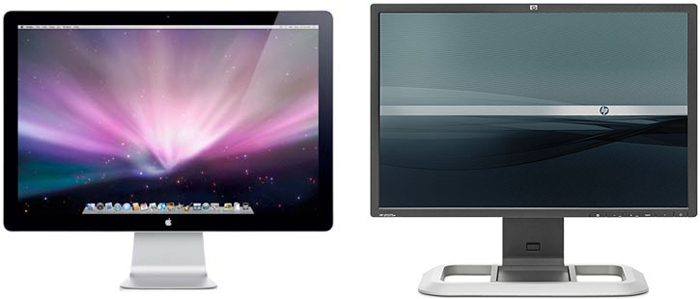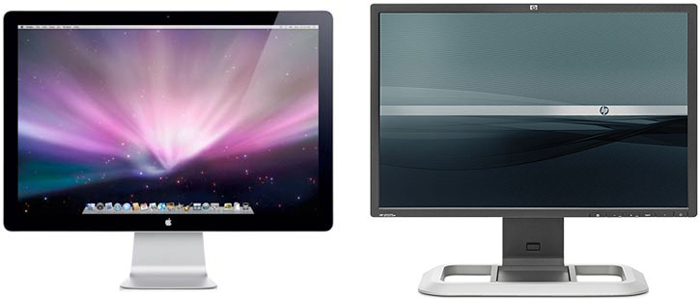
After posting my brief comparison of the color gamut displayed by the Apple 24″ LED Cinema Display and the Hewlett-Packard 24″ LP2475w, I was asked if the comparison was fair as the computers used to build the profiles of the two monitors were different. While the only piece of hardware that truly matters when comparing the profiles built is the display adapter (video card), this component was, indeed, different between the HP laptop and the MacBook Pro.
In addition to comparing the color gamut of the monitors to the Adobe RGB color space, which is used by many digital SLR cameras, I was also asked what ramification viewable gamut had on printing using Epson 4000 and Epson 4800 print engines. I compare the gamut viewable by the monitors with Epson’s ICC profiles (for both printers) of Enhanced Matte Photo Paper and Premium Luster Photo Paper, both of which now have strange names: Ultra Premium Presentation Paper Matte and Ultra Premium Photo Paper Luster.
Method:
The equipment used for this comparison was a MacBook Pro v3.1 (with a DVI connection) with an nVidia GeForce 8600M GT video card, an Intel Core2Duo 2.2 GHz processor and 2GB RAM running OS X 10.5.8. The calibration unit remained the same as in the previous comparison: a Gretag-Macbeth / X-Rite Eye One Pro spectrophotometer.
Unlike the laptop used for the previous comparison, the DVI connector meant that there was no obvious way to connect the MacBook Pro to the new Apple 24″ LED Cinema Display, which has only a “Mini DisplayPort” connector. To overcome this problem, an Atlona AT-DP200 Mini DisplayPort to DVI adapter bridged the gap between the monitor and the laptop. So long as an older style MacBook is plugged into the monitor with this adapter–and the USB cable from the monitor is also plugged into the laptop–the user has complete control over resolution and brightness. There are no color controls, unlike the HP monitor, but this has been true of all cinema displays from Apple over the past few years, and that did not stop many a PC user to purchase an Apple screen.
The ICC color profiles created by the Eye One Match 3 software were then compared using a trial version of Gamutvision 1.3.7 with a rendering intent of “None” on a two-dimensional XY Chromaticity (saturation map) projection.
Results after the jump!
Continue reading “Follow-up: Apple Cinema 24″ versus HP LP2475w 24″”
